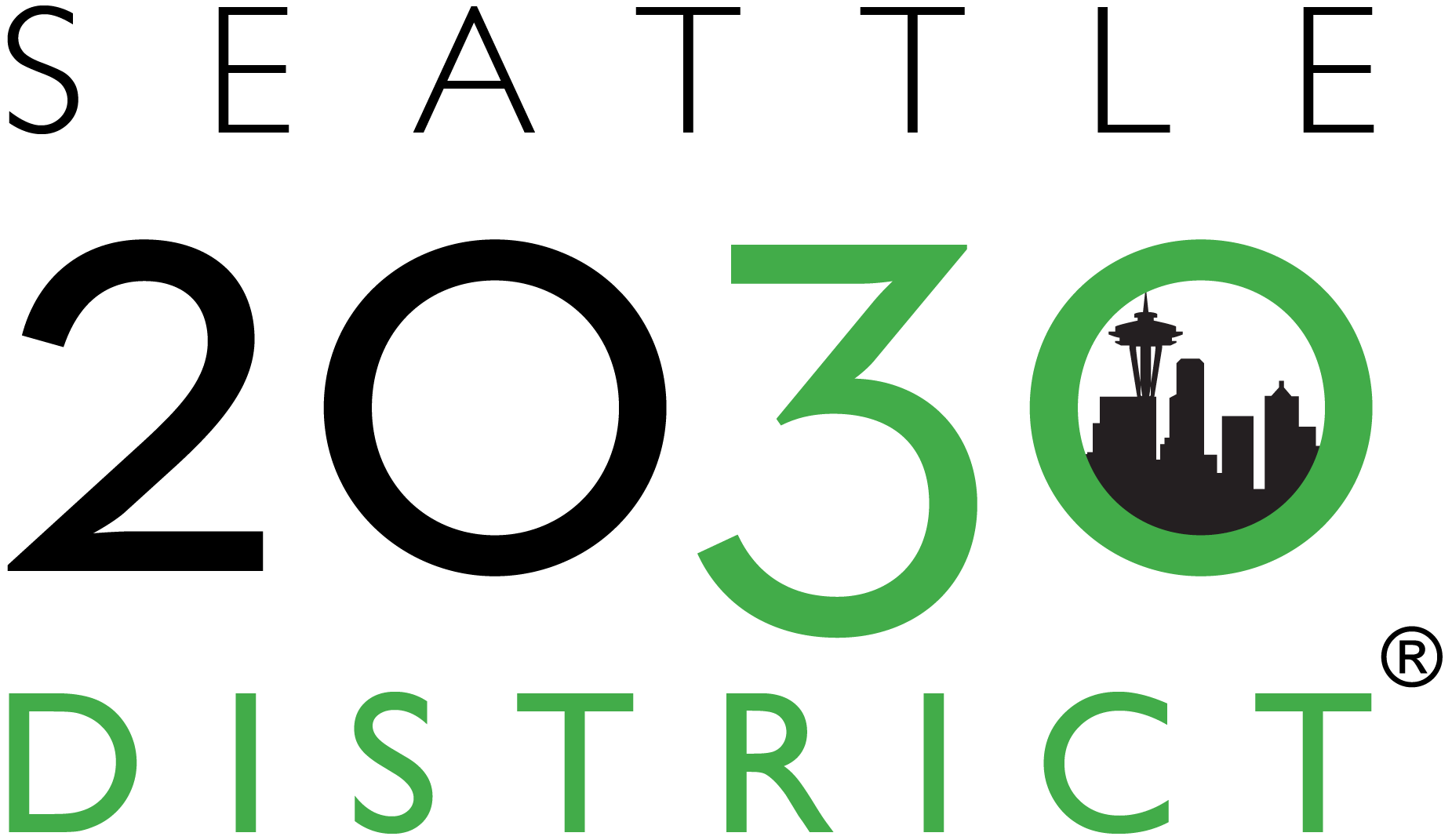I see that there are different sets of performance targets for existing buildings and new construction projects with the performance target getting more aggressive each five years. If I hit the target for the year in which the project is finished, am I “grandfathered” or am I required to make incremental performance upgrades each five years?
New Construction Projects or Existing Building Retrofits that meet the performance levels which were current at the time the design process concluded are considered compliant with the Seattle 2030 District goals. The ultimate goal to improve overall, district-wide performance. Given that performance is averaged over all buildings within the District, to meet overall District targets some buildings will need to voluntarily exceed the minimum requirements. In addition, new construction goals are more aggressive than existing building targets, therefore new construction project meeting the new construction goals already exceed expectation for individual existing buildings.
Are projects certified as 2030 compliant or as meeting the goals of the Seattle 2030 District?
No, there is no certification program or public recognition program such as display plaques.
If I join as a Developer, does this require our organization to meet the District’s performance requirements for all our future renovation projects and/or new construction projects?
Property owners, managers and developers are required to make a good-faith effort to meet the District’s performance goals for the existing and/or new buildings under their control and in their portfolio within the 2030 District boundary. The timing for portfolio performance upgrades and/or the development of new properties is affected by a myriad of factors. There is not a requirement to bring individual existing buildings into compliance within a specific timeframe.
What’s the relationship between the Seattle 2030 District as a public-private partnership and the City of Seattle?
The Seattle 2030 District is a privately led, voluntary membership organization and participation is not required by any government entity. The City of Seattle supports the organization’s energy, water and transportation goals and to that aim has joined the District as a Community Stakeholder, as well as a Property Owner and Manager member.
Are professional services free to property owners, managers and developer members of the District?
Members that have signed the commitment letter and paid their annual fees are eligible for Seattle 2030 District-specific services, as well as access to limited pro-bono professional services from District members and reduced admissions to Seattle 2030 District sponsored educational programs.
How is the Seattle 2030 District related to or different from Architecture 2030, the AIA+2030 Professional Education Series, the AIA 2030 Commitment and other 2030 Districts around the United States?
The year 2030 is widely considered as the decisive deadline for achieving a carbon-free society in order to mitigate catastrophic climate change. In response to this crisis, the non-profit organization, Architecture 2030, was founded by Edward Mazria in 2002. This organization put forth the 2030 Challenge, a set of defined performance targets that incrementally step down carbon emissions from the built environment to zero emissions in the year 2030. To support this challenge, other organizations, such as the American Institute of Architects (AIA) have used these targets as the framework for programs such as the AIA’s 2030 Commitment. The AIA+2030 Professional Education Series is an education program created by AIA Seattle, in partnership with Architecture 2030. 2030 Districts across the United States may vary in approach, however, they all establish performance goals based on the 2030 Challenge for Planners.
